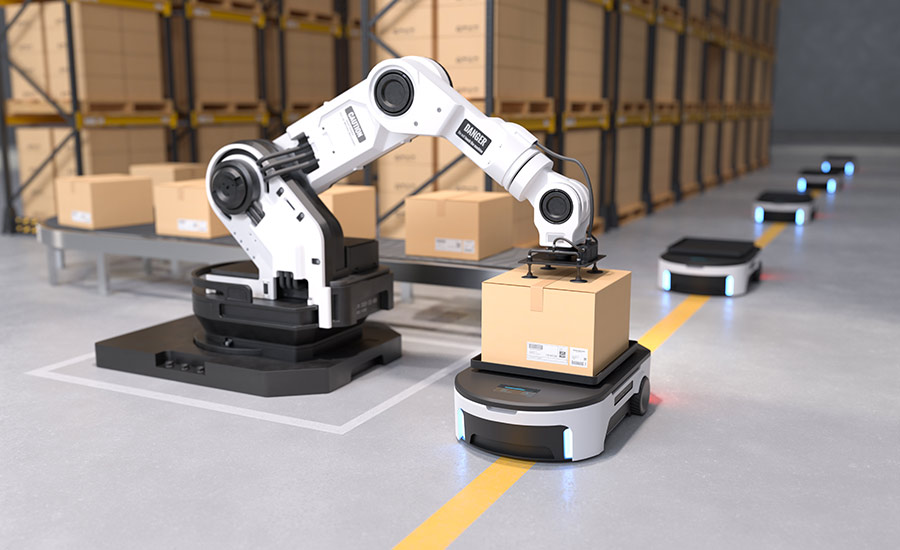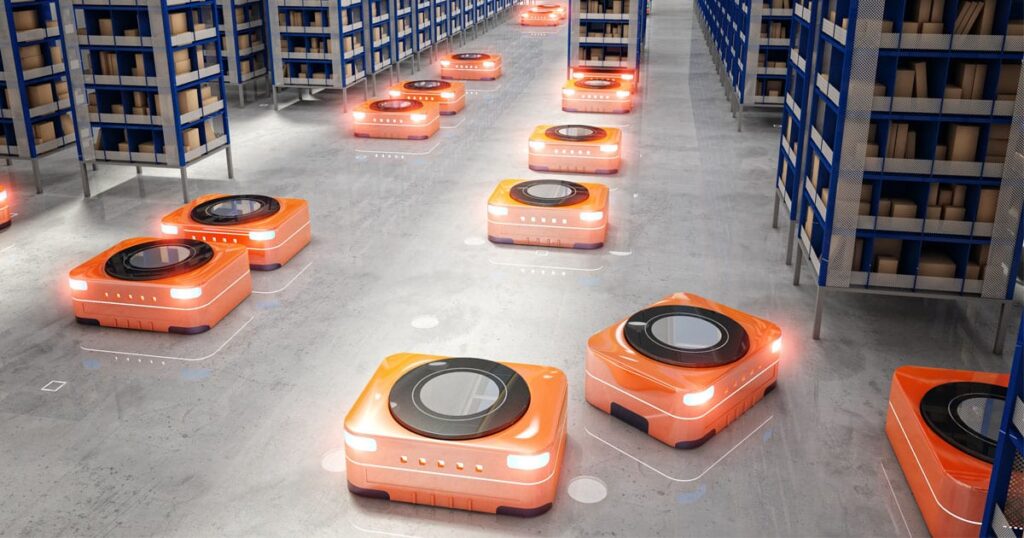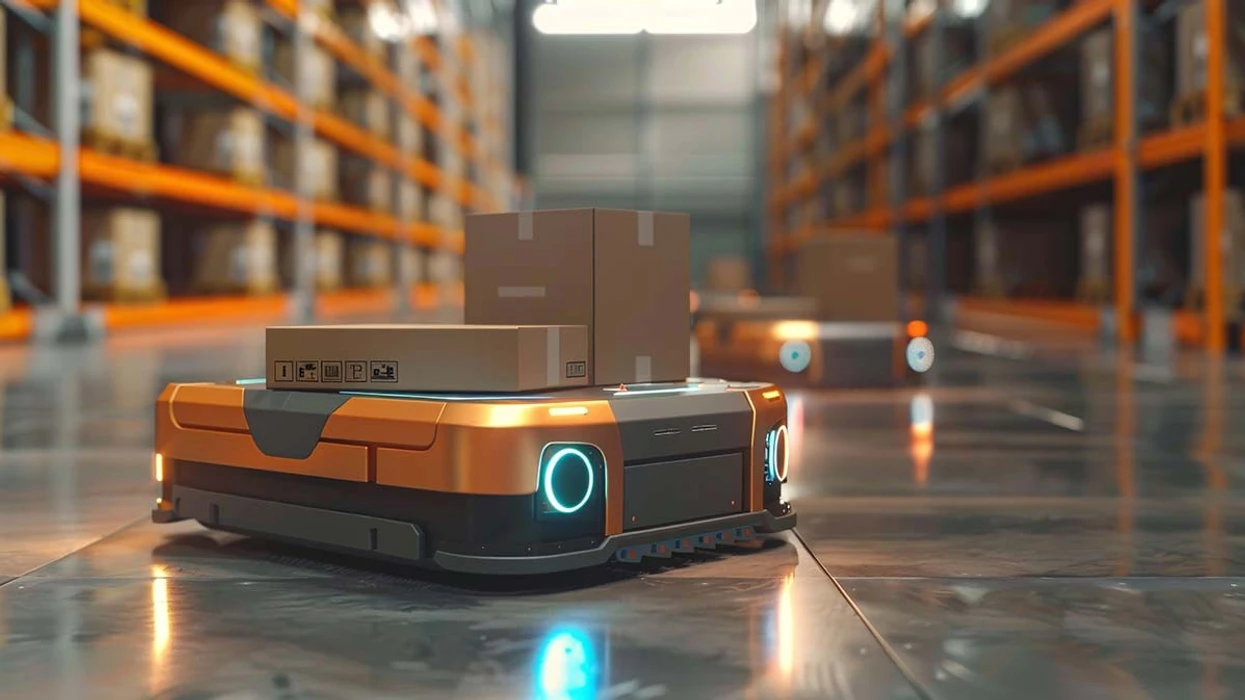In recent years, Kuwait has experienced a surge in technological breakthroughs, and robotics is leading the charge in revolutionising the logistics and warehousing sector. From automated sorting systems to agile mobile robots, Kuwaiti companies are integrating intelligent solutions that drive efficiency, accuracy, and growth. In this article, we explore how robotics is reshaping this vital industry, humanising the story by focusing on people, processes, and progress.
Transforming Efficiency at Every Step
Every day, massive volumes of goods flow through Kuwait’s ports, warehouses, and distribution centers. Traditional methods struggled with bottlenecks, errors, and safety hazards. Robotics has changed that entirely. Autonomous guided vehicles (AGVs) and autonomous mobile robots (AMRs) now transport pallets with precision, minimising delays and streamlining operations.
Warehouse staff, freed from repetitive manual lifting and moving tasks, can now focus on more value-added roles such as quality checks, inventory planning, and customer service. This shift not only boosts job satisfaction but also increases overall productivity. Robotics is not replacing people, it is empowering them.
Dramatic Improvement in Accuracy and Inventory Control
We have all experienced the frustration of inventory mismatches. In Kuwait’s fast-moving logistics sector, even small errors can ripple into major issues such as missed deliveries, dissatisfied clients, and costly returns. Robotics and automation systems, integrated with real-time tracking technologies like RFID and bar code scanning, have drastically reduced such errors.
Robotic picking systems select items with pinpoint accuracy and maintain constant visibility into inventory status. Warehouse supervisors can now monitor stock in real time, identify shortages or surpluses instantly, and make informed decisions quickly. This leads to smoother supply chains and stronger reliability.
Speeding Up Order Processing and Delivery
With e-commerce on the rise in Kuwait, customer expectations around delivery speed have intensified. Robotics powered sorting centers and conveyor systems now process orders at lightning-fast speeds. Pick and pack robots, supported by software that priorities the most efficient picking routes, can prepare large orders in minutes.
This rapid acceleration translates to shorter lead times, happier customers, and better competitiveness. Logistics firms highlight that order fulfillment times have improved by over 50 percent, with fewer errors. Such improvements in speed are not just about technology, they are about meeting real human demands for rapid, seamless service.

Enhancing Safety and Reducing Workplace Risks
Warehouses and logistics centers traditionally pose risks including heavy lifting, repetitive strain injuries, and vehicle collisions. Enter robotics: equipment like robotic arms, lifting bots, and automated forklifts reduce human exposure to hazardous tasks.
Since robotics adoption, several Kuwaiti companies report a significant decrease in workplace injuries. Staff appreciate not having to perform dangerous physical labour and feel more comfortable and cared for. This sense of safety and well-being strengthens company culture and loyalty.
Real-Time Data and Smarter Decision-Making
Robots do not just move boxes, they collect data. Every operation becomes a data point: travel paths, pick success rates, downtime, and throughput. With analytics dashboards, logistics managers in Kuwait can spot inefficiencies, anticipate maintenance needs, and optimise manpower allocation.
For example, one warehouse manager shares that robotics enabled dashboards helped identify idle time on night shifts, leading to refined scheduling and reduced costs. Others use predictive analytics to anticipate supply surges, especially around national holidays or peak retail seasons, and adjust staffing and robotic fleet deployment accordingly.
Scalability and Adaptability for Changing Demands
One of the most powerful benefits of robotics in Kuwaiti logistics is flexibility. Whether facing seasonal e-commerce surges or expanding to new product lines, modular robotic systems can be scaled up or reprogrammed rapidly. Adding a few more AMRs or configuring picking cells differently is far easier than redesigning entire manual workflows.
This adaptability allows companies to stay nimble in a competitive market. When demand fluctuates, such as retail spikes during Ramadan or tourism season, logistics operations can quickly adjust, ensuring seamless service without over staffing or underutilised assets.

Human Stories Behind the Technology
Let us pause and humanise this transformation. Meet Fatima, a warehouse supervisor in a leading logistics firm in Kuwait City. Before robotics, her team struggled with manual order sorting, working long hours and often facing supply issues. Since robotics implementation, she describes her role as more strategic, overseeing quality control, mentoring younger staff, and collaborating with engineers to refine system processes. She adds that morale has improved and the team feels more motivated.
Then there is Ahmed, an AGV technician. He initially feared automation might threaten jobs. But training programs offered by his company allowed him to pivot into robotics maintenance. He now works with cutting-edge machines, troubleshooting issues, and ensuring reliable up time. This ups killing shifted his career path and he feels excited about future opportunities.
These human stories reveal the real impact: robotics does not eliminate roles, it elevates them and empowers employees to grow and thrive.
Boosting Sustainability and Reducing Waste
Robotic systems in Kuwait’s warehouses also support sustainability goals. By optimising routes, reducing redundant movements, and minimising idle time, robotics cuts energy consumption. Precise picking reduces errors and returns, which helps reduce waste and shipping emissions.
Some companies have even started using solar-backed charging stations for robot fleets, further reducing carbon footprints. With Kuwait’s national ambitions around smart city infrastructure and sustainability, robotics adoption aligns well with broader environmental objectives.
Strengthening Kuwait’s Regional Competitiveness
Across the Gulf region, logistics excellence is a critical differentiator. Kuwait’s strategic location positions it as a gateway between continents. Adopting robotics enables Kuwaiti logistics providers to compete with global players, attract foreign investment, and expand cross-border operations.
As robotics matures, companies are exploring advanced applications like robotic drone delivery for last-mile operations or autonomous sortation systems in airport freight zones. These innovations enhance Kuwait’s regional standing in logistics sophistication.
Overcoming Challenges and Accelerating Adoption
Of course, shifting to robotics is not without hurdles. Initial investments can be substantial. Many logistics firms in Kuwait grapple with legacy infrastructure and workforce that require significant ups killing. Integrating robotics with older warehouse management systems also poses technical complexity.
But these challenges are being met head-on. Government initiatives now support industrial automation and technology training. Companies partner with robotics providers to pilot small-scale deployments, gradually ramping up. Training centers and vocational institutes in Kuwait are offering courses in robotics maintenance and automation operations.
Gradual adoption strategies, combined with clear ROI measurements and workforce development, ensure smooth transitions and long-term success.
What the Future Holds
Looking ahead, robotics in Kuwait’s logistics and warehousing will evolve even further. Expect to see greater collaboration between humans and robots working side by side, robots handling tasks in close proximity to people. AI-powered systems will optimise workflows in real time, adjusting to interruptions or changing order flows instantly.
Vertical farming robots may integrate with cold-chain logistics for food storage, and drone-based inventory scanning could become standard in high-ceiling warehouses. Digital twins, virtual replicas of warehouses, will allow real-time simulation and fine-tuning of robotics deployments.
Immersive training using AR and VR will up skill workers faster, enabling them to understand robotic workflows and maintenance rapidly. Kuwait’s logistics sector is poised to become not just efficient, but smart, collaborative, and future-ready.
Conclusion
Kuwait’s logistics and warehousing landscape is undergoing a profound transformation. Robotics is at the vanguard, enhancing speed, reducing errors, improving safety, boosting sustainability, and elevating human roles. Employees like Fatima and Ahmed are thriving in new capacities, underscoring how technology and people can flourish together.
As Kuwait embraces robotics, it strengthens its position as a regional logistics hub and nurtures a tech-forward workforce. The story is not just about machines, it is about human progress, empowerment, and shared growth. Robotics is reshaping logistics, and Kuwait is seizing the opportunity with purpose, ambition, and heart.
Do follow Gulf Magazine on Instagram.
Also Read – Biometric Authentication in Oman Banking: Transforming Security and Customer Experience



